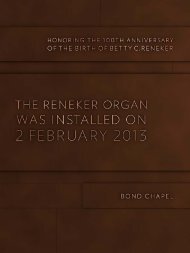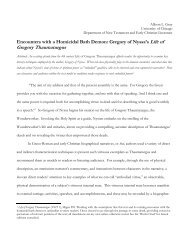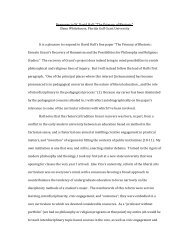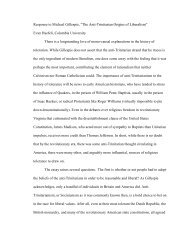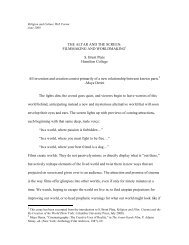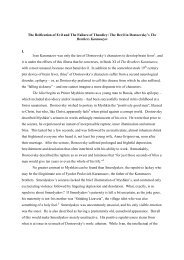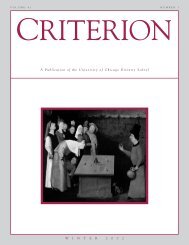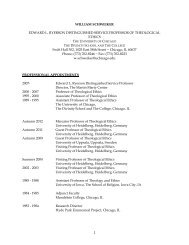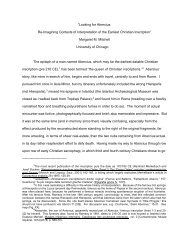Housing the Dead: the tomb as house in Roman Italy - Divinity School
Housing the Dead: the tomb as house in Roman Italy - Divinity School
Housing the Dead: the tomb as house in Roman Italy - Divinity School
Create successful ePaper yourself
Turn your PDF publications into a flip-book with our unique Google optimized e-Paper software.
Never<strong>the</strong>less, compared to <strong>the</strong> competitive diversity of <strong>the</strong> Pompeian streets, <strong>the</strong>re seems little<br />
attempt to catch <strong>the</strong> eye of <strong>the</strong> p<strong>as</strong>ser-by. The one pyramid at <strong>the</strong> Isola Sacra is not, like that of<br />
Sestius <strong>in</strong> Rome, a conspicuous monumentum aere perennius, but a modest m<strong>in</strong>iature.<br />
18<br />
In a word, <strong>the</strong>re seems to have been ano<strong>the</strong>r flip-round <strong>in</strong> <strong>the</strong> relative importance of <strong>the</strong> external and<br />
<strong>in</strong>ternal function. Valerius Herma’s <strong>tomb</strong> is a powerful illustration because of <strong>the</strong> sheer richness of<br />
its <strong>in</strong>ternal decoration (on it see Toynbee and Ward-Perk<strong>in</strong>s 1956, 82-87; Eck 1987, 71-73; Mielsch<br />
and von Hesberg 1995, 143-208; Gee forthcom<strong>in</strong>g, Figs 26-27) The magnificent stucco work<br />
enriches an <strong>in</strong>ternal architecture elegantly articulated with niches, and ranges statues of <strong>the</strong> gods<br />
and philosophers, and of Valerius Herma, his wife, daughter, son and perhaps patron. As <strong>in</strong><br />
Pompeii, <strong>the</strong>re is a close relationship between <strong>the</strong> presentation outside, <strong>in</strong> <strong>the</strong> form of an <strong>in</strong>scription,<br />
and that <strong>in</strong>side. From outside, we meet <strong>the</strong> family:<br />
C Valerius Herma fecit et<br />
Flaviae T.f. Olympiadi coiugi et<br />
Valeriae Maximae filiae et C Valerio<br />
Olympiano filio et suis libertis<br />
libertabusque posterisque eorum.<br />
The cl<strong>as</strong>sic nuclear family group<strong>in</strong>g is extended, just <strong>as</strong> at Pompeii and across <strong>Italy</strong>, by <strong>the</strong> generic<br />
group<strong>in</strong>g of freedmen and freedwomen and <strong>the</strong>ir descendants.<br />
But it is only <strong>in</strong>side that we can get a grip on <strong>the</strong> family. Flavius Herma presents himself repeatedly,<br />
almost obsessively (Eck 1987). The marble panel of his sarcophagus re<strong>in</strong>troduces himself and his<br />
wife:<br />
C Valerius Herma dum<br />
vivo mihi feci et<br />
Flaviae T.f. coiugi.<br />
The letter<strong>in</strong>g is elegant, <strong>the</strong> grammar a touch uncerta<strong>in</strong> (‘dum vivo’ comb<strong>in</strong>es <strong>the</strong> dative of ‘vivo<br />
mihi feci’ with <strong>the</strong> fragmentary clause ‘dum vivus eram’). He <strong>in</strong>troduces himself aga<strong>in</strong> on his son’s<br />
sarcophagus:<br />
C Valerio Olympiano qui vixit<br />
annis IIII menses V dies XIII<br />
C Valerius Herma pater.



